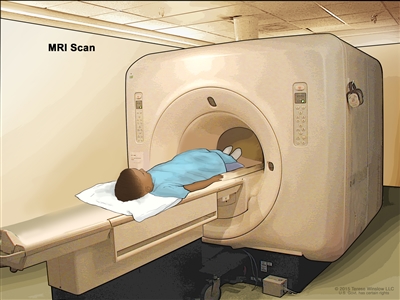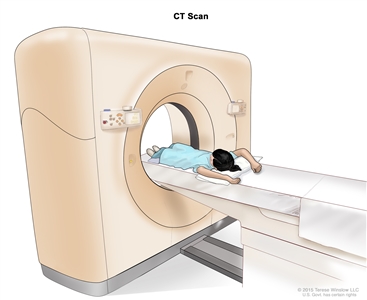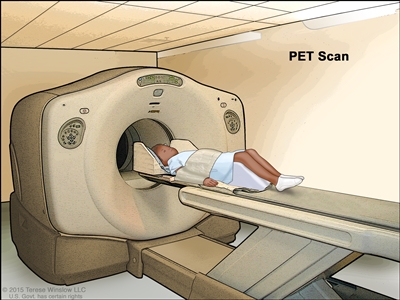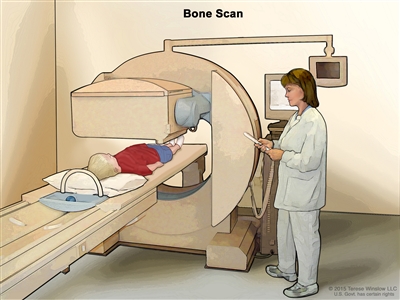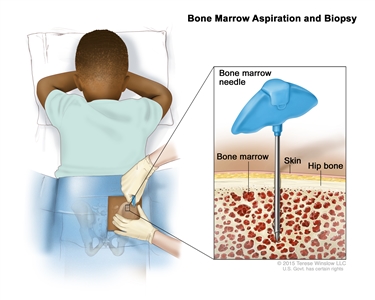Treatment Option Overview
Children with Ewing sarcoma should have their treatment planned by a team of health care providers who are experts in treating cancer in children.
A pediatric oncologist, a doctor who specializes in treating children with cancer, oversees treatment of Ewing sarcoma. The pediatric oncologist works with other health care providers who are experts in treating children with Ewing sarcoma and who specialize in certain areas of medicine. Other specialists may include:
- pediatrician
- surgical oncologist or orthopedic oncologist
- radiation oncologist
- pediatric nurse specialist
- social worker
- rehabilitation specialist
- psychologist
- fertility specialist
There are different types of treatment for children with Ewing sarcoma.
You and your child's care team will work together to decide treatment. Many factors will be considered, such as where the cancer is located, your child's age and overall health, and whether the cancer is newly diagnosed or has come back.
Your child's treatment plan will include information about the tumor, the goals of treatment, treatment options, and the possible side effects. It will be helpful to talk with your child's care team before treatment begins about what to expect. For help every step of the way, visit our booklet, Children with Cancer: A Guide for Parents.
The following types of treatment are used:
Chemotherapy
Chemotherapy (also called chemo) uses drugs to stop the growth of cancer cells. Chemotherapy either kills the cancer cells or stops them from dividing.
Chemotherapy for Ewing sarcoma is taken by mouth or injected into a vein. When given this way, the drugs enter the bloodstream and can reach cancer cells throughout the body. Systemic combination chemotherapy is often given to shrink the tumor before surgery or radiation therapy and to kill any cancer cells that have spread to other parts of the body. It is often the first treatment given and lasts for about 6 to 12 months.
Chemotherapy drugs used alone or in combination to treat Ewing sarcoma include:
- cyclophosphamide
- docetaxel
- doxorubicin
- etoposide
- gemcitabine
- ifosfamide
- irinotecan
- temozolomide
- topotecan
- vincristine
Other chemotherapy drugs not listed here may also be used.
Learn more about how chemotherapy works, how it is given, common side effects, and more at Chemotherapy to Treat Cancer.
Radiation therapy
Radiation therapy uses high-energy x-rays or other types of radiation to kill cancer cells or keep them from growing. Ewing sarcoma is treated with external beam radiation therapy. This type of therapy uses a machine outside the body to send radiation toward the area of the body with cancer.
Radiation therapy is used when the tumor cannot be removed by surgery or when surgery to remove the tumor will affect important body functions or the way the child will look. It may be used to make the tumor smaller and decrease the amount of tissue that needs to be removed during surgery. It may also be used to treat any tumor that remains after surgery and tumors that have spread to other parts of the body.
Radiation therapy may also be used as palliative therapy to relieve symptoms caused by the tumor in the bone.
Learn more about External Beam Radiation Therapy for Cancer and Radiation Therapy Side Effects.
Surgery
Surgery is usually done to remove cancer that is left after chemotherapy or radiation therapy. When possible, the whole tumor is removed by surgery. Tissue and bone that are removed may be replaced with a graft, which uses tissue and bone taken from another part of the child's body or a donor. Sometimes an implant, such as artificial bone, is used.
After the doctor removes all the cancer that can be seen at the time of the surgery, some children may be given chemotherapy or radiation therapy to kill any cancer cells that are left. Treatment given after the surgery to lower the risk that the cancer will come back is called adjuvant therapy.
Stem cell transplant
High doses of chemotherapy are given to kill cancer cells. These treatments destroy healthy cells, including blood-forming cells. Stem cell transplant is a treatment to replace the blood-forming cells. Stem cells (immature blood cells) are removed from the child's blood or bone marrow and are frozen and stored. After the child completes chemotherapy, the stored stem cells are thawed and given back to the child through an infusion. These reinfused stem cells grow into (and restore) the body's blood cells. Stem cell transplant is used to treat localized and recurrent Ewing sarcoma.
You may want to think about having your child take part in a clinical trial.
For some children, joining a clinical trial may be an option. There are different types of clinical trials for childhood cancer. For example, a treatment trial tests new treatments or new ways of using current treatments. Supportive care and palliative care trials look at ways to improve quality of life, especially for those who have side effects from cancer and its treatment.
You can use the clinical trial search to find NCI-supported cancer clinical trials accepting participants. The search allows you to filter trials based on the type of cancer, your child's age, and where the trials are being done. Clinical trials supported by other organizations can be found on the ClinicalTrials.gov website.
Learn more about clinical trials, including how to find and join one, at Clinical Trials Information for Patients and Caregivers.
Treatment for Ewing sarcoma may cause side effects.
Cancer treatments can cause side effects. Which side effects your child might have depends on the type of treatment they receive, the dose, and how their body reacts. Talk with your child's treatment team about which side effects to look for and ways to manage them.
To learn more about side effects that begin during treatment for cancer, visit Side Effects.
Problems from cancer treatment that begin 6 months or later after treatment and continue for months or years are called late effects. Late effects of cancer treatment may include:
- physical problems
- changes in mood, feelings, thinking, learning, or memory
- second cancers (new types of cancer), such as acute myeloid leukemia and myelodysplastic syndrome, or sarcoma in the areas treated with radiation therapy
Some late effects may be treated or controlled. It is important to talk with your child's doctors about the effects cancer treatment can have on your child. Learn more about Late Effects of Treatment for Childhood Cancer.
Follow-up care may be needed.
As your child goes through treatment, they will have follow-up tests or check-ups. Some tests that were done to diagnose or stage the cancer may be repeated to see how well the treatment is working. Decisions about whether to continue, change, or stop treatment may be based on the results of these tests.
Some of the tests will continue to be done from time to time after treatment has ended. The results of these tests can show if your child's condition has changed or if the cancer has recurred (come back).
To learn more about these follow-up tests, visit Tests to diagnose Ewing sarcoma.
